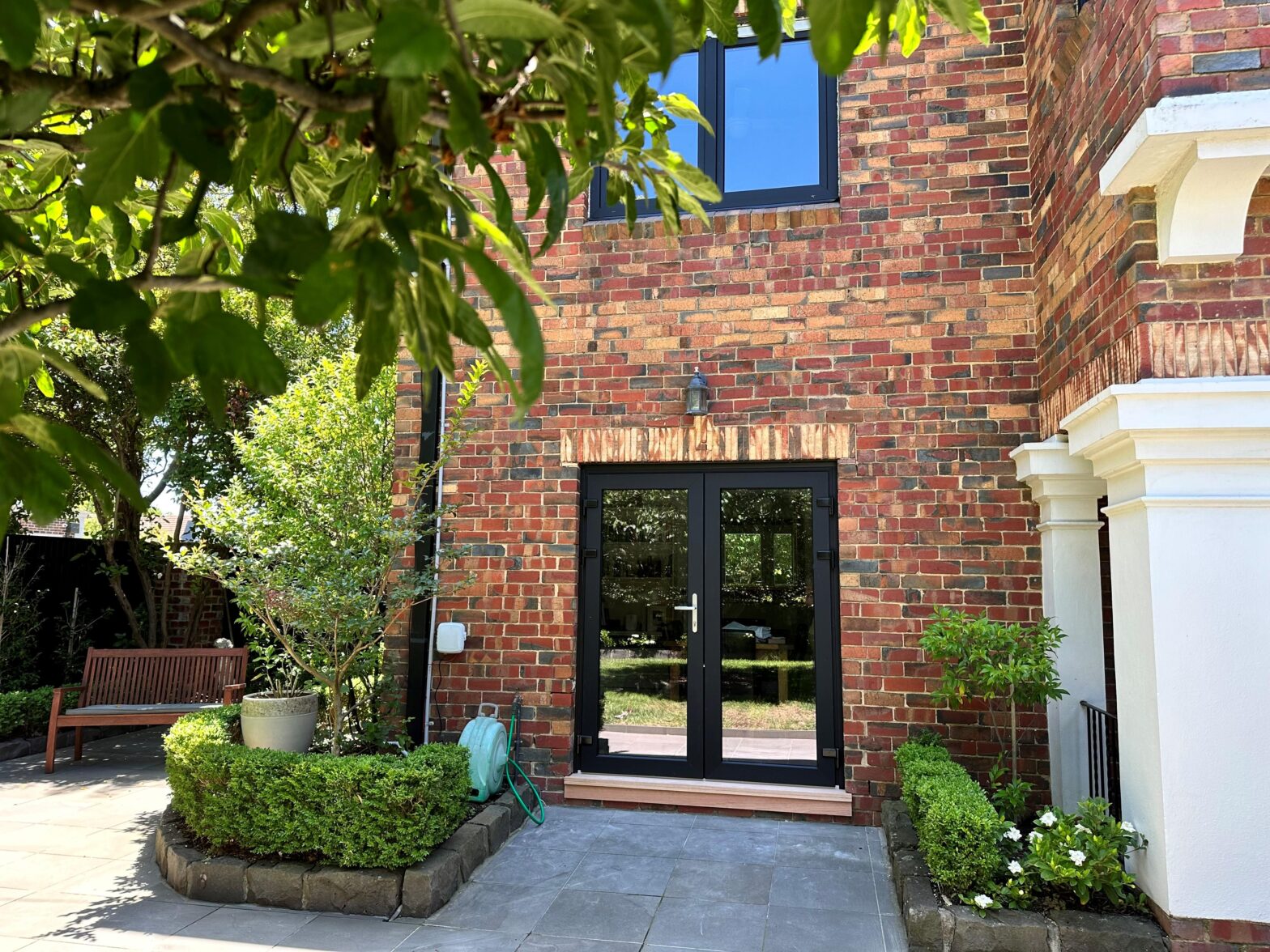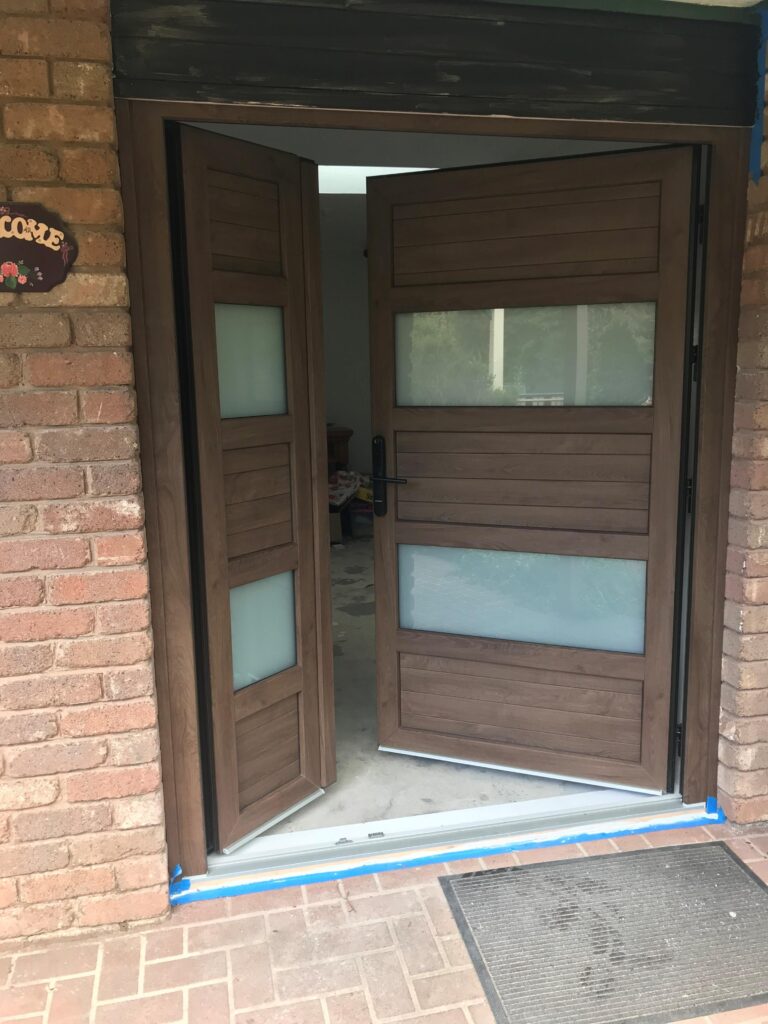
A Complete Guide To French Doors

With their classic design and elegant charm, French doors have always been a symbol of sophistication. Their signature glass panels, framed gracefully in wood or metal, seamlessly connect the indoors with the world outside, allowing natural light to cascade into homes and create an inviting ambience.
For many homeowners, French doors represent more than just an architectural choice; they’re a reflection of a refined aesthetic. In Melbourne, as the city’s architectural landscape continues to evolve, the subtle appeal of French doors Melbourne continues to resonate, making them a desirable feature for those keen on blending tradition with contemporary design.
An overview of French doors
From their inception to the present day, French doors have undergone significant transformations, adapting to the changing tastes and technological advancements of the times.
Originating in France during the Renaissance, French doors were initially designed as windows reaching the floor, allowing more light into homes. Over time, they evolved into doors, often used to connect interiors to balconies or gardens.
The primary materials for French doors today are varied. Wooden French doors, crafted from hardwoods like oak, maple, or mahogany, come in various finishes, such as stained, painted, or natural. They can be tailored to specific needs. In contrast, glass French doors, often made from robust, shatter-resistant tempered glass, are available in clear, tinted, or patterned designs, making them ideal for homes needing ample natural light.
Meanwhile, metal French doors, constructed from aluminium or steel, offer diverse finishes like painted, powder-coated, or anodised. Their rust and corrosion resistance make them especially suitable for coastal homes.
But the journey of the French doors didn’t stop at these materials. With the advent of technology, their functionality has been significantly enhanced. For example, the double-glazed uPVC windows revolutionised the insulation properties of French doors, ensuring homes remain energy efficient.
Benefits of composite uPVC French doors
Composite uPVC (unplasticized polyvinyl chloride) French doors are available in various lamination finishes. These doors are a good choice for homes in all climates because of the following reasons:
-
Thermal insulation : Made of rigid, durable plastic, uPVC windows are resistant to fading, rotting, and corrosion. Their excellent insulation properties keep homes warm in winter and cool in summer, making them ideal for the Australian climate.
-
Sound insulation : Beyond their aesthetic appeal, uPVC doors and windows significantly reduce noise pollution, ensuring a peaceful indoor environment.
-
Energy efficiency : The energy efficiency of uPVC is unparalleled. Not only are your energy bills reduced, but uPVC doors also require no painting or varnish, resist termites, and withstand extreme weather conditions.
-
Customisation : UPVC doors are available in a wide range of styles and colours, so you can find one that matches the look of your home.
-
Durability and security : Their resistance to elements like rot and corrosion speaks volumes about their durability. Additionally, the multi-point locking systems in uPVC windows enhance security, giving homeowners peace of mind.
Today, whether one opts for a single French door or the best exterior French doors, the choices are vast, catering to diverse architectural needs and personal preferences.
Different French door styles

French doors, with their classic charm and functional design, have evolved over the years to cater to various architectural styles and homeowner preferences.
Below are the most common French doors popular all over the world:
-
Traditional French doors : Characterised by their dual design with multiple small panes or lites, they offer a timeless look that’s perfect for classic and colonial-style homes.
-
Bi-fold French doors : Multiple panels fold against each other, offering a wide opening. They’re perfect for connecting indoor spaces to patios or large balconies.
-
Single French door : This is a single French door with the classic French design suitable for narrower spaces or as an interior door between rooms.
-
French door with transoms : Also referred to as transom lights, this type of French door features a rectangular or semicircular window positioned above the door. These decorative windows were historically used to allow additional light and airflow into homes. It’s also available in various materials like stained or frosted glass and wood.
-
French door with sidelights : Flanked by narrow windows on one or both sides, a French door with sidelights allows extra light into the room while maintaining privacy.
-
Modern French doors : A contemporary twist on the classic design, these doors often feature larger panes of glass, sleek frames, and minimalist hardware.
French doors are more than just a functional element; they’re a design statement. Whether you’re aiming for a vintage charm or a modern aesthetic, there’s a French door style ready to elevate your space.
Practical applications of French doors
French doors aren’t just about aesthetics; they’re about functionality and versatility. Here are some of the most common practical applications of French doors:
-
To connect two rooms : French doors are a great way to create a more open, airy feel in your home by combining two rooms. This is especially effective in small spaces, as it can make the space feel larger. For example, you could use French doors to connect the living room to the dining room or the kitchen to the backyard.
-
To bring in natural light : French doors are made up of multiple glass panels, which allow in a lot of natural light. This can be beneficial for both your home’s energy efficiency and your mood. Natural light has been shown to improve cognitive function, reduce stress levels, and boost your overall mood.
-
To add kerb appeal : French doors can add a touch of elegance and sophistication to your home’s exterior. They can also make your home more inviting and welcoming. If you want to improve your home’s kerb appeal, French doors are a great option.
Their design allows them to be integrated into various parts of a home, providing both a visual treat and practical benefits.

How to maintain your French doors
Maintaining French doors is crucial to ensure their longevity, functionality, and appearance. Here are some steps to help you maintain your French doors effectively:
Regular cleaning
For glass panels, use a soft cloth or sponge with a mild detergent solution to clean the glass. For a streak-free finish, use a squeegee or newspaper to wipe the glass dry.
Cleaning uPVC frames in French doors can be straightforward, but there are some caveats:
-
Avoid abrasives : The material has a glossy coat on its surface, so it’s crucial not to use abrasive cleaners, harsh detergents, stainless steel scourers, or household cleaning products. These can damage the glossy finish of the uPVC.
-
Avoid bleach : Do not use bleach on uPVC frames.
For regular cleaning, ordinary soap and water should suffice. If there are stubborn stains, mix one-part vinegar with one-part hot water. This natural solution, combined with some elbow grease, should help remove stains. Alternatively, you can use a specially formulated uPVC cleaner.
Cleaning uPVC is easy, but remember to avoid the things mentioned here to ensure the longevity and pristine condition of your uPVC frames.
Track maintenance
-
Cleaning : The tracks of French doors, especially sliding ones, can accumulate dirt, debris, and small particles. Vacuum the tracks regularly and use a brush or cloth to remove any stubborn dirt.
-
Lubrication : Apply a door-approved lubricant to the sliding rails to ensure smooth operation. However, if you have aluminium tracks, avoid using lubricants, as they might rust.
-
Inspect hardware : Regularly check the handles, locks, and hinges for any signs of wear or damage. Ensure they are tight and functioning correctly. Lubricate the hinges periodically to prevent squeaking.
-
Weatherstripping : Inspect the weatherstripping around the doors to ensure it’s in good condition. Replace any worn-out or damaged weatherstripping to maintain the door’s insulation properties.
-
Check the glass : Inspect the glass panels for any cracks or damage. If you notice any issues, consider replacing the damaged panel to maintain the door’s insulation and security.
-
Adjustments : French doors might become misaligned over time. If you notice gaps or the doors don’t close smoothly, you might need to adjust the doors or their hardware.
-
Security : Ensure that the locks are functioning correctly. Consider installing additional security measures, such as security bars or upgraded locks, to enhance security.
These maintenance steps can help your French doors remain functional, look great, and last many years.
Conclusion
French doors, a blend of artistry and functionality, have long stood as a testament to architectural elegance. From their humble beginnings in Renaissance France to their modern-day adaptations, they’ve consistently offered homeowners a chance to merge the indoors with the outdoors, all while adding a touch of sophistication.
In Melbourne and beyond, as we continue to balance the age-old charm with contemporary design needs, French doors are a timeless choice. Whether you’re renovating an old space or designing a new one, incorporating these doors can transform any room into a luminous sanctuary, bridging the gap between tradition and modernity.
Remember that it’s not just about aesthetics; it’s about creating spaces that resonate with warmth, light, and timeless elegance.




